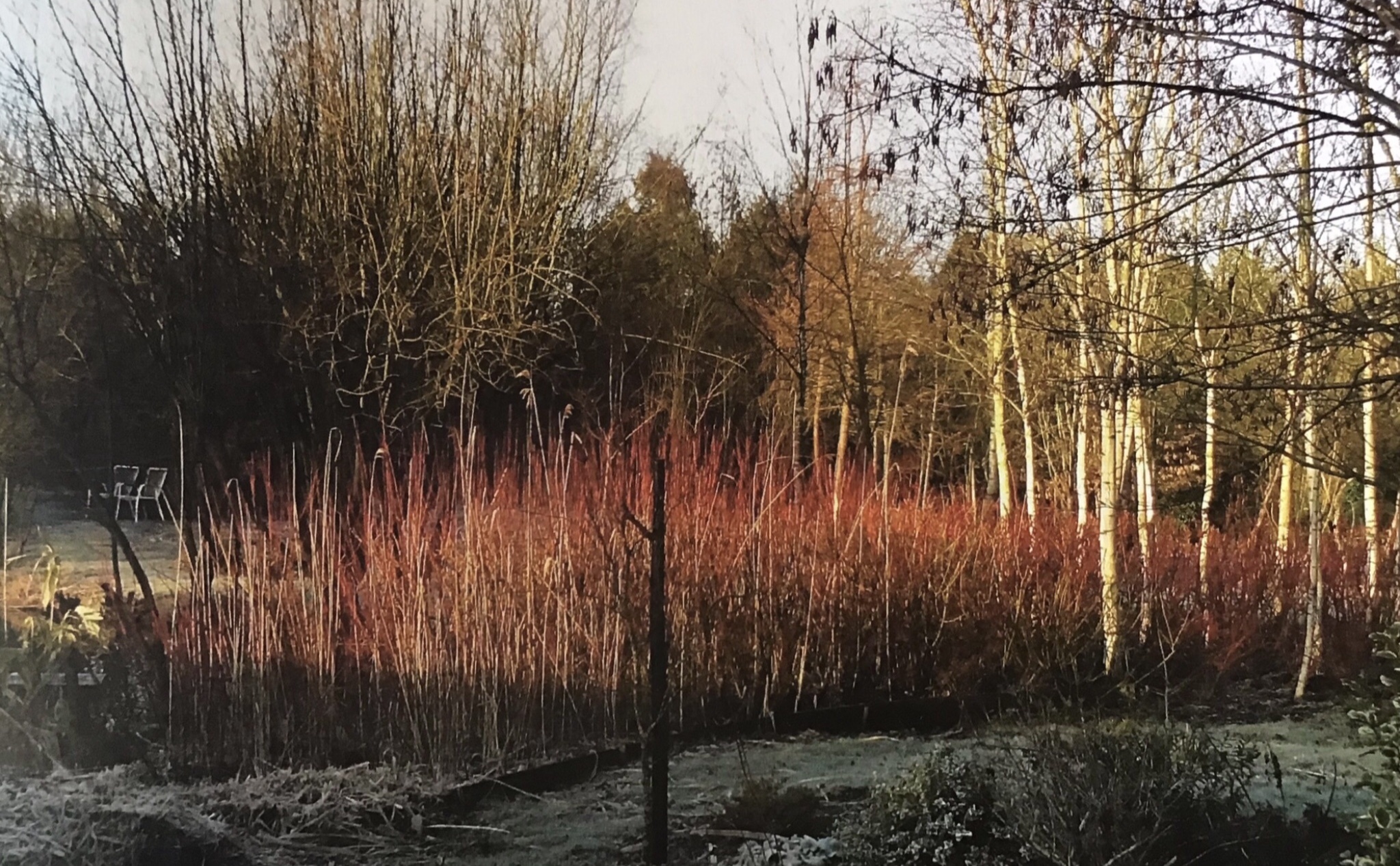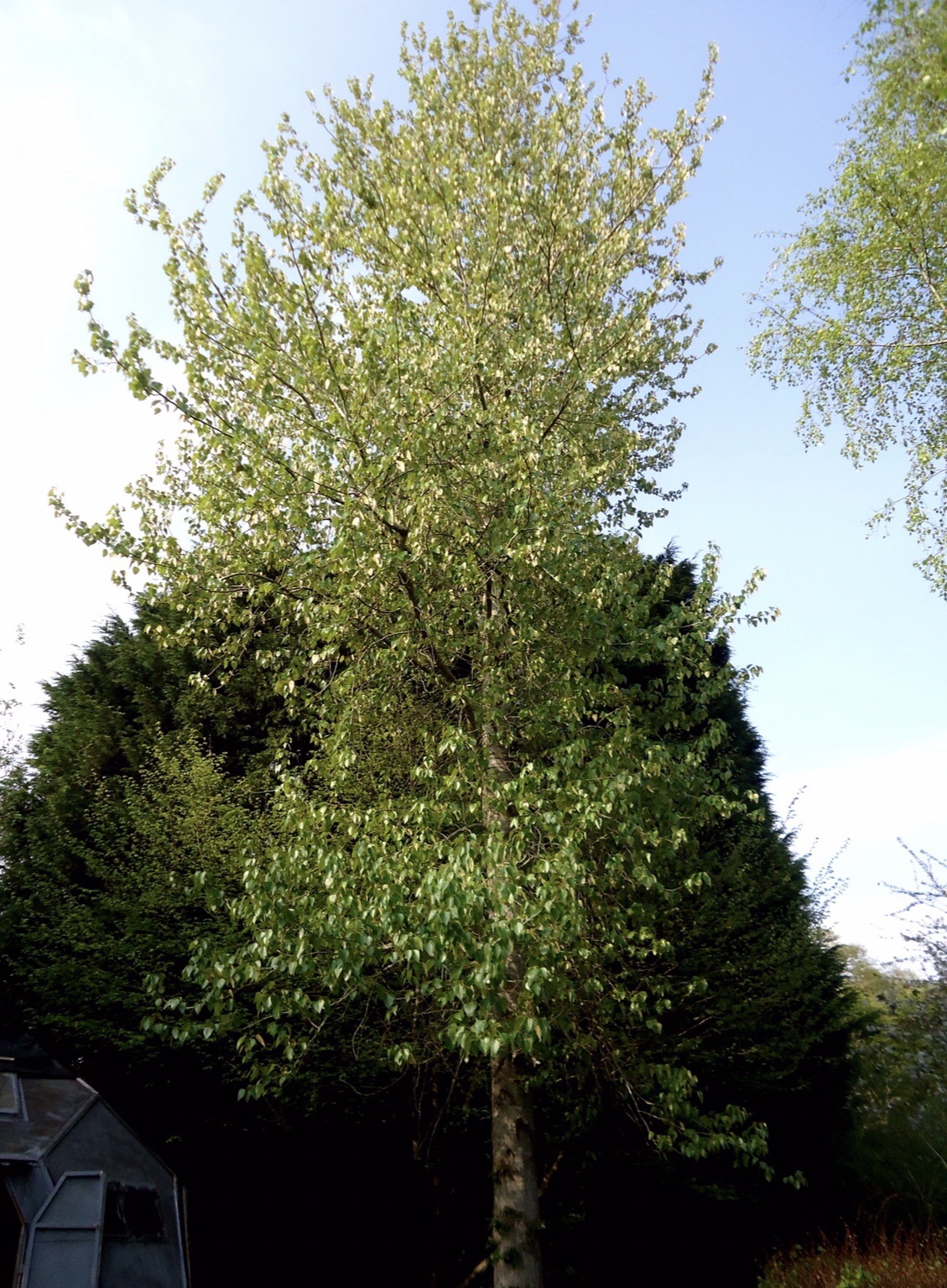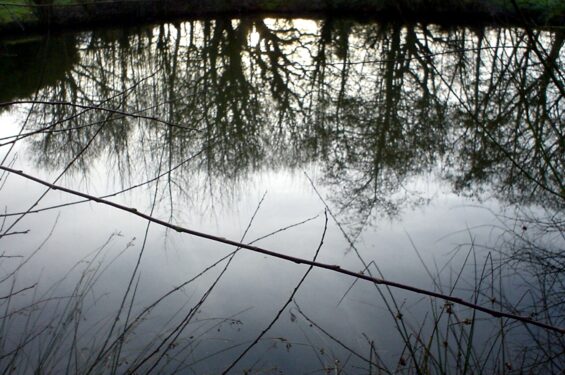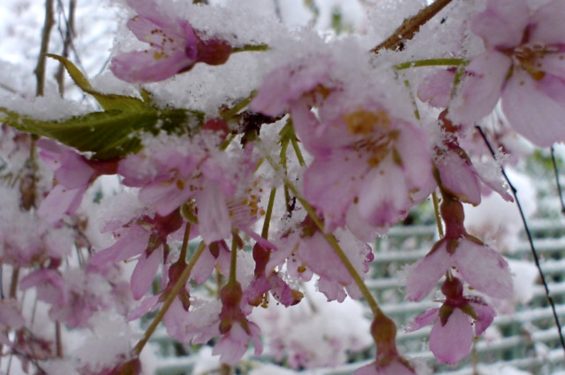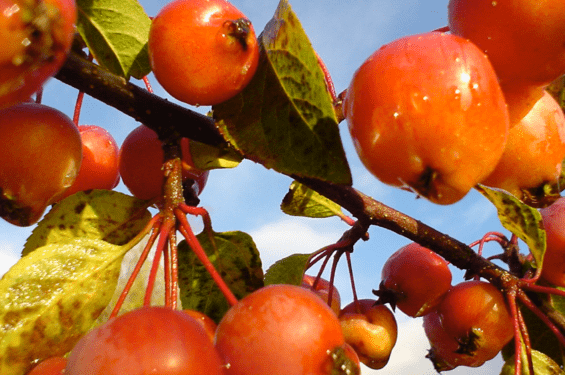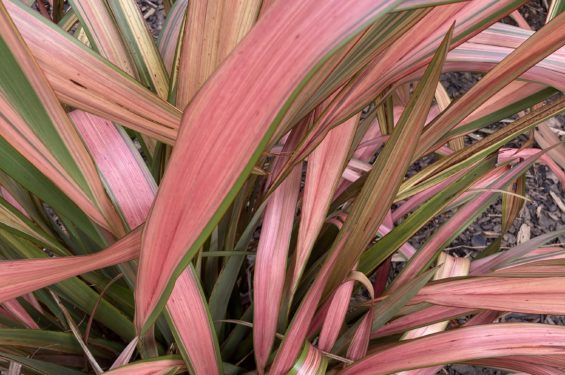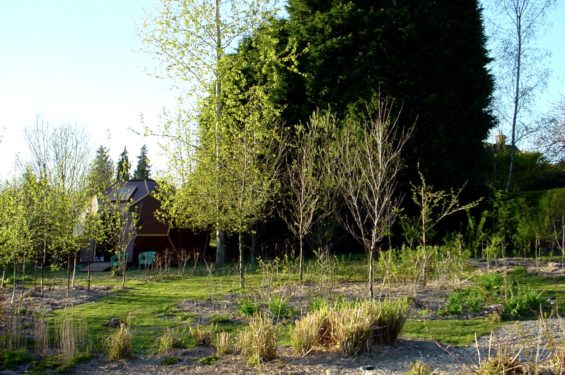Trees and Windbreaks
Projects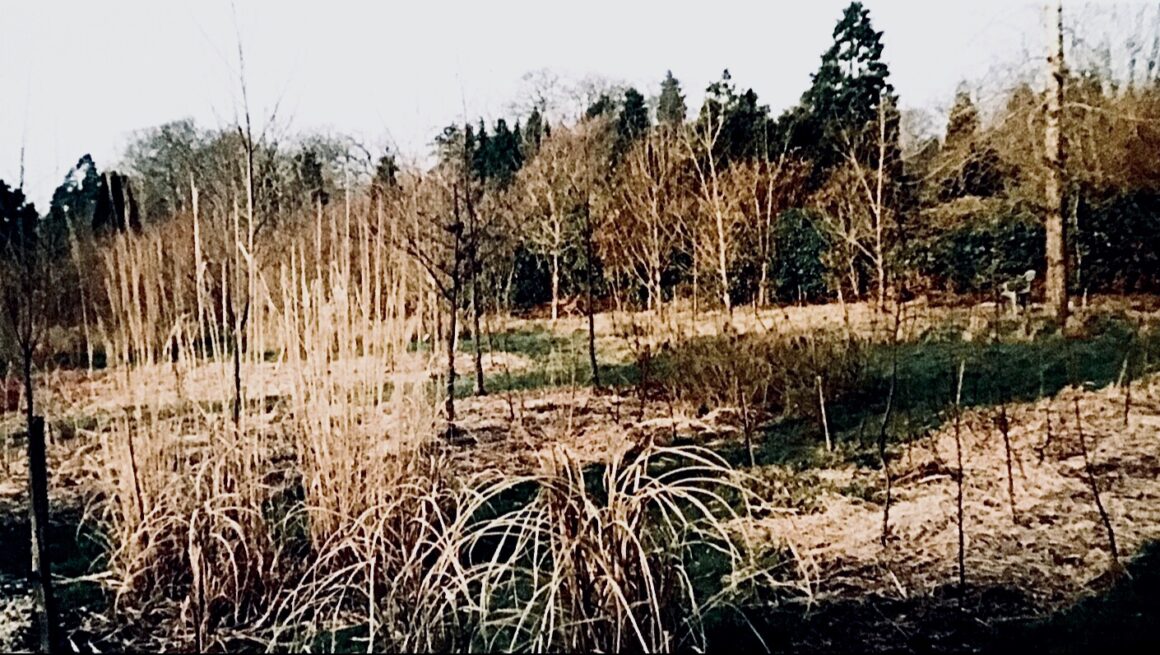
We were keen to break up the space with native trees, to enclose the garden to the east with an intermediate layer under the mature oaks and beech trees. On the western boundary we wanted to soften the rectangular outline of the plot. Adding some trees would create diversity and increase cover to encourage wildlife.
Our vivid crop of buttercups attracted many insects as a result of us just doing nothing. It wasn’t the answer long term, but had inspired us to research native species that would develop this pattern.
After the Great Storm, G’s company were offering a selection of British native tree saplings to employees. These included Hazel, Beech, Field Maple, Hawthorn and Ash. What a fantastic deal, and just what we wanted. We planted them at the bottom of the plot, near to the south west corner, to break up and soften the edges.
Later I discovered a local tree nursery that held a bare-root shrub and tree sale each winter. These were bundles of around 25 bare-rooted slips, just sticks really, about 30 cm long. The sale became an annual treat for me. A lucky dip, as I never knew what would be available so would buy what they had and then decide where they would be planted. This required a certain amount of imagination and faith in my decisions. What would 25 tiny sticks claiming to be Silver Birch, but frankly looking unlikely as potential trees, ever develop into? Had I spaced them far enough apart? Too close together? Would the dog career through them and knock them over? If they did mature, would I forever wish I’d planted them a little to the left, or right, or somewhere different, or not at all? In my usual way, I just got on with it and optimistically hoped for the best. Time would tell.
We accumulated small trees in pots as and when. Sometimes as gifts; such as an Amelanchier, a Balsam Poplar and a Contorted Willow, and other times to remember people; some Whitebeams, three Hawthorns, a Quercus coccinea. Other trees we bought over the years just because we liked them and thought they would look good in a certain position.
-
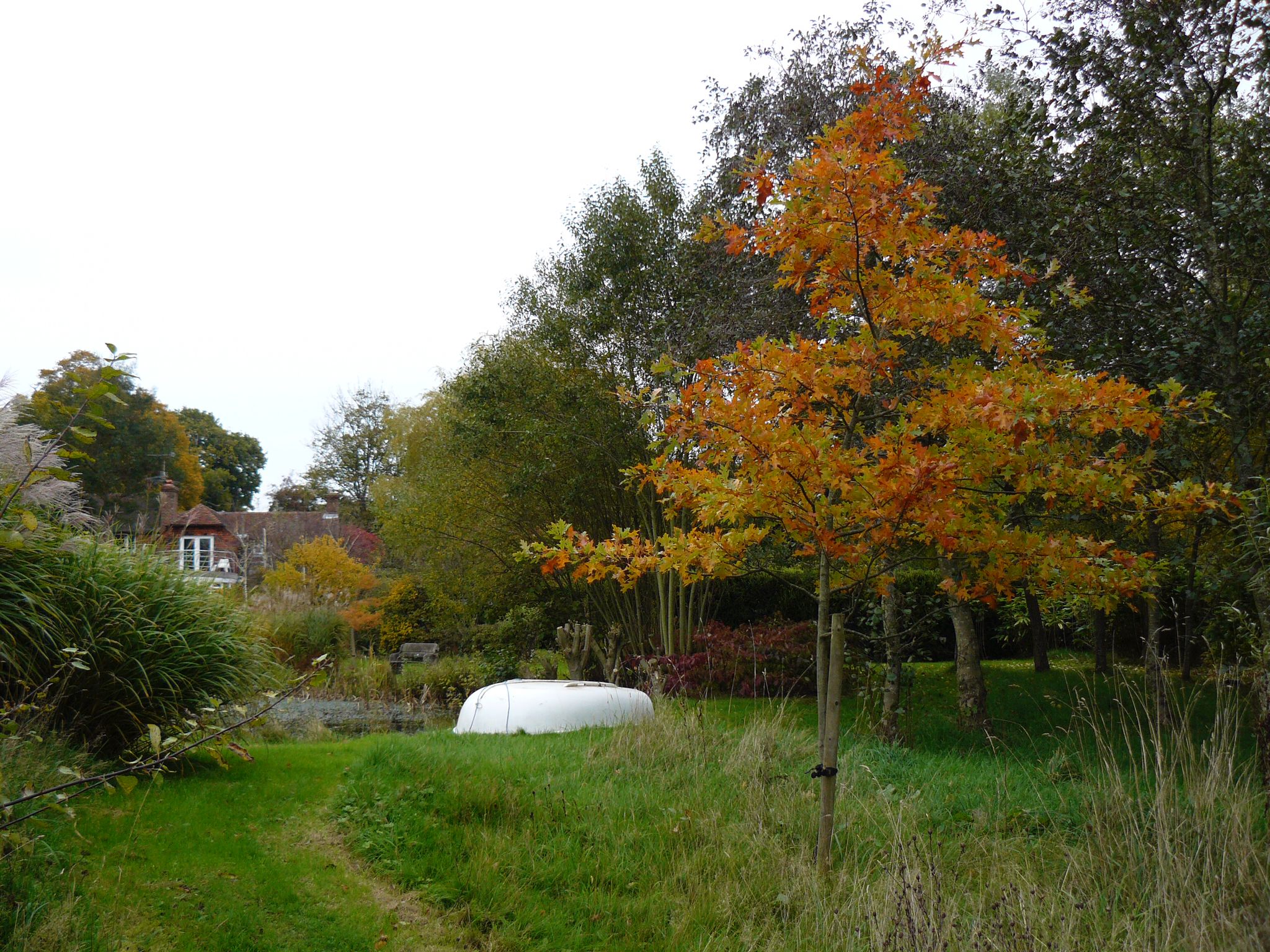
Quercus coccinea -
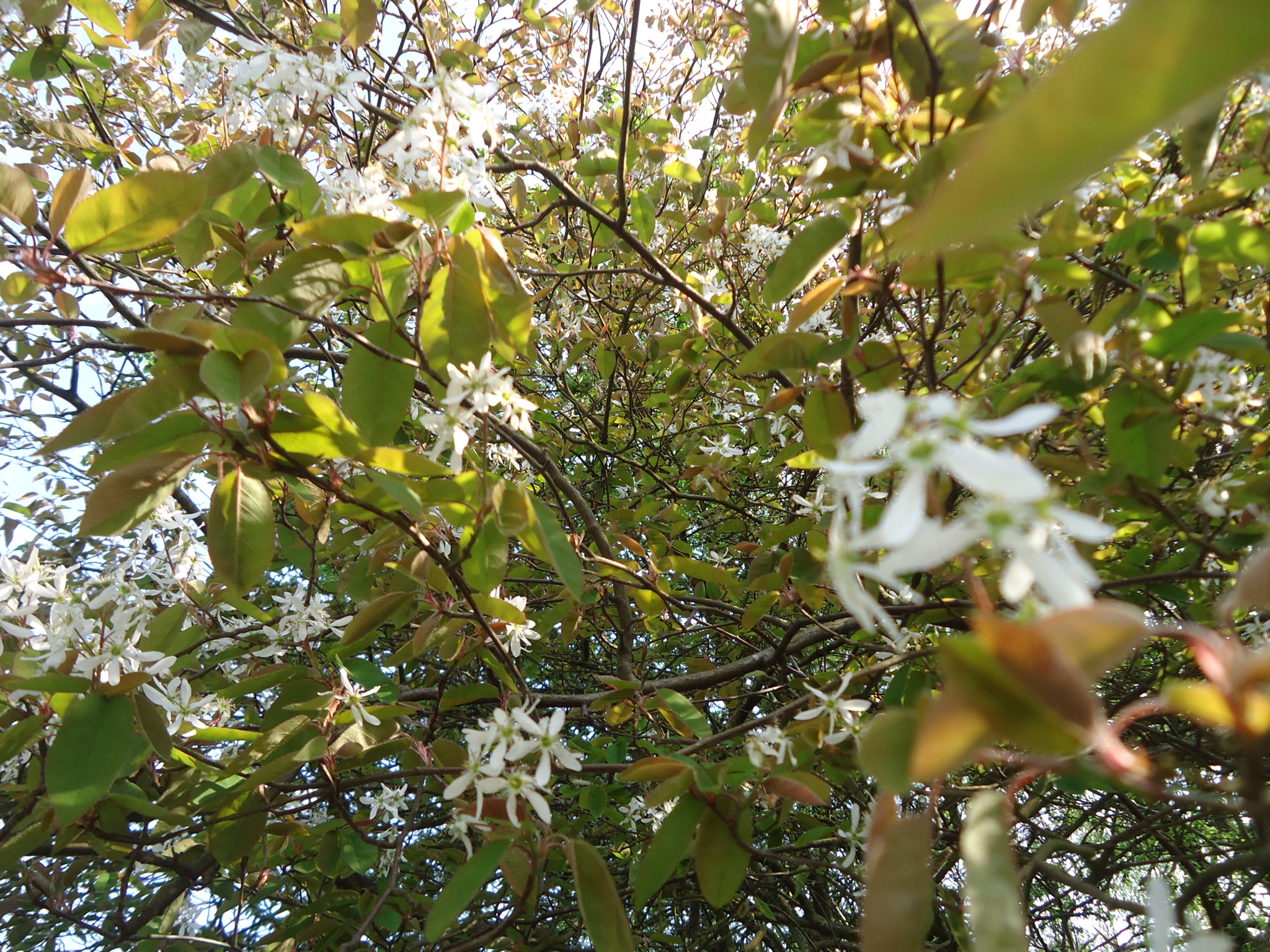
Amelanchier -
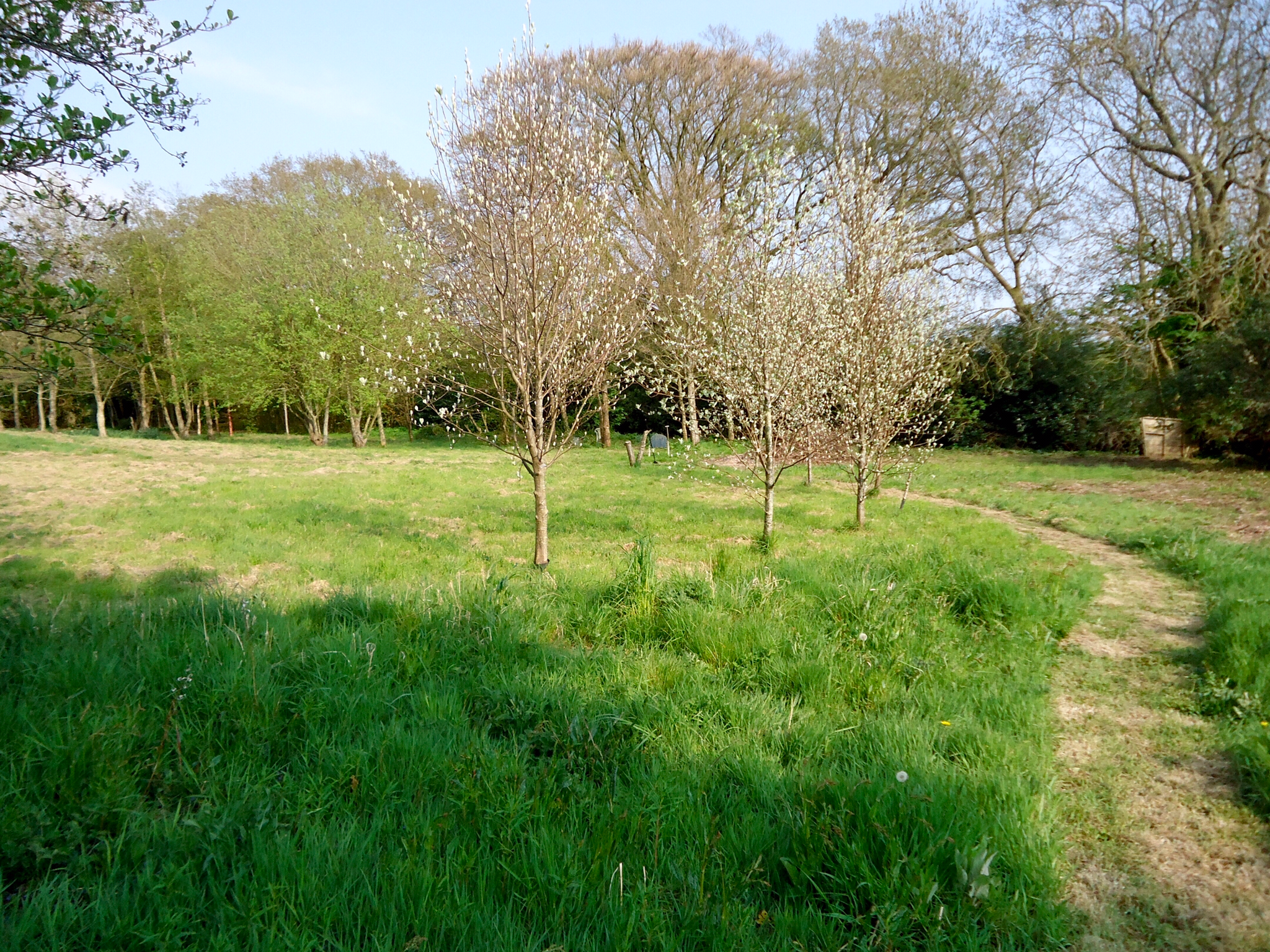
Whitebeams -
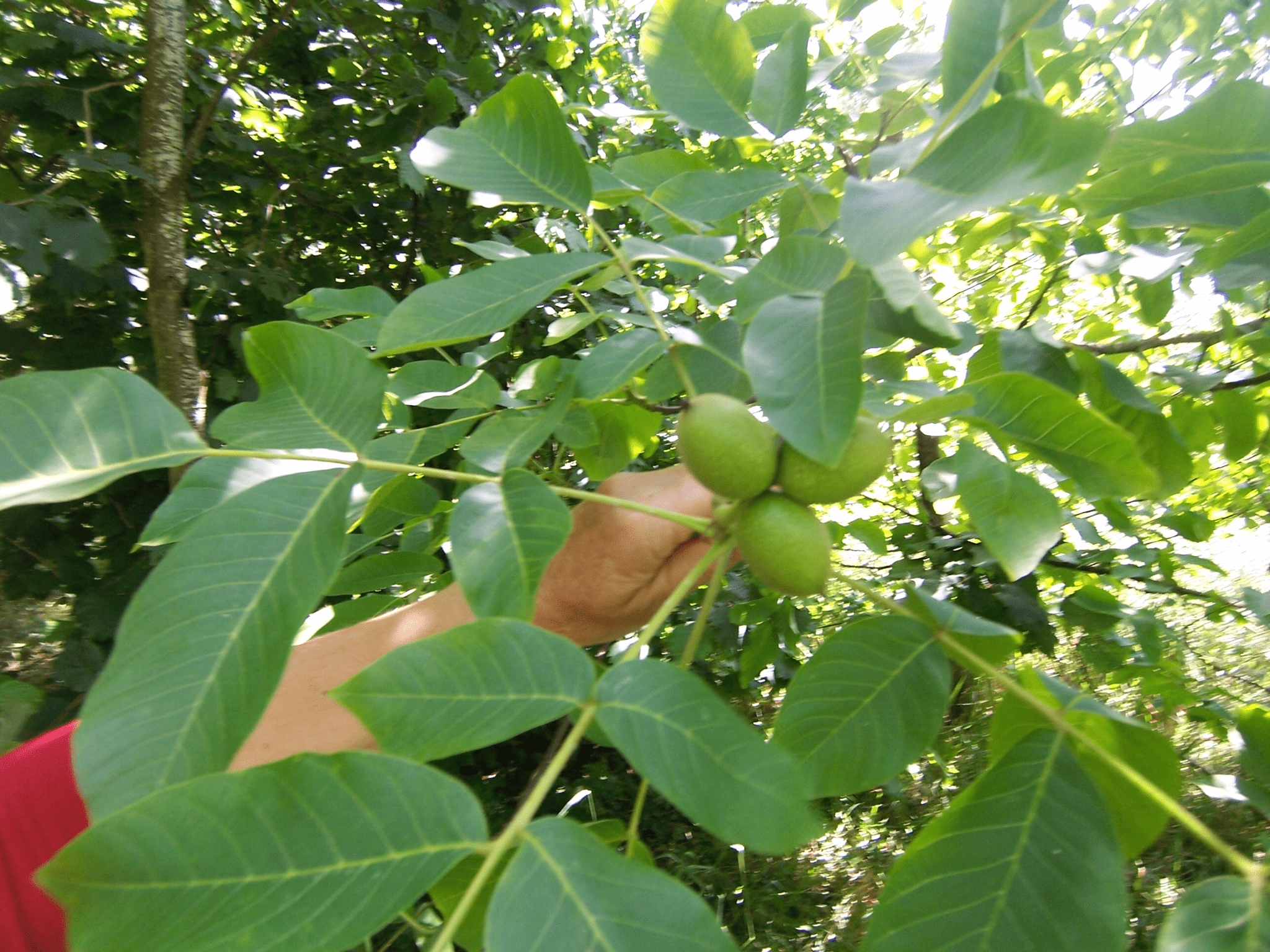
Walnut -
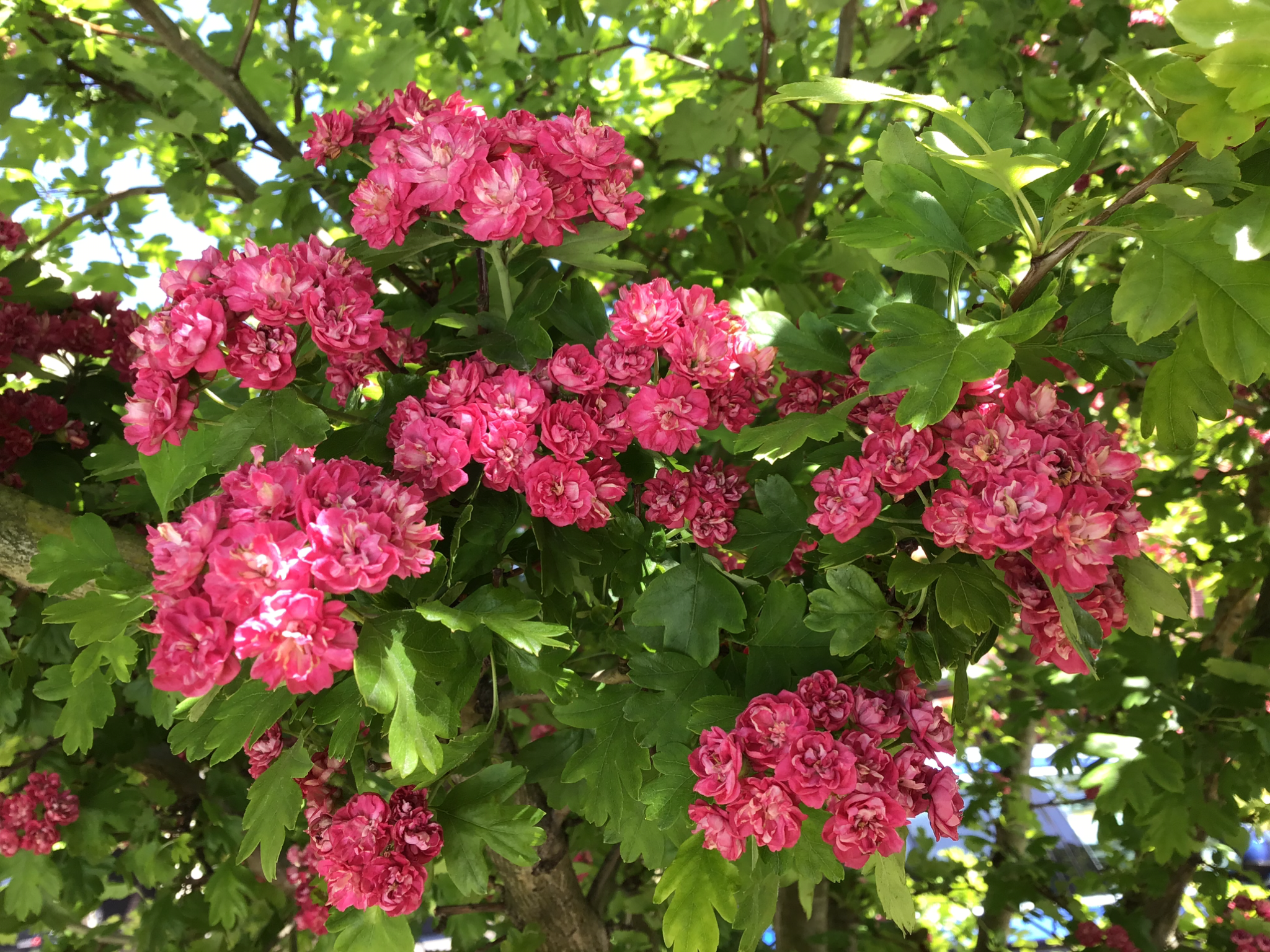
Hawthorns
Quite early on I discovered how easy it was to propagate willow. Just stick it in the ground. In our clay they grew prolifically and I was soon trying to eradicate it and wishing I hadn’t been so enthusiastic. It grew right round the pond, loving the dampness, and it was only after we got the small boat that we were able to successfully reach branches growing out across the water, regain some order, and reclaim views.
In time we had a varied and beautiful selection of trees, for wildlife and for ourselves to enjoy.
